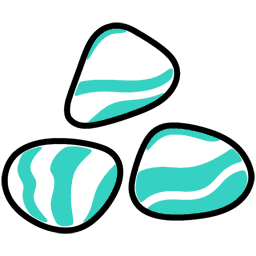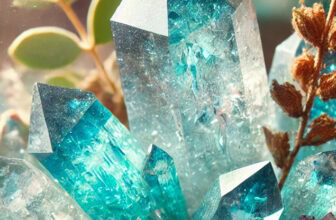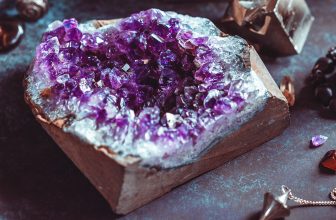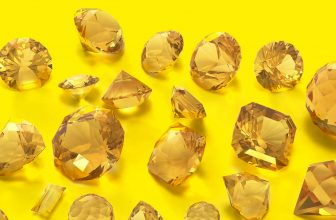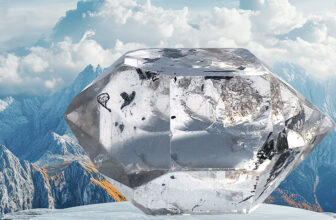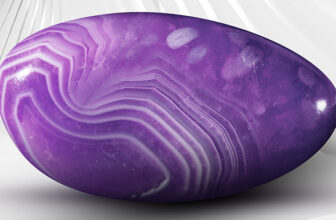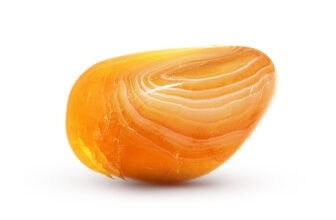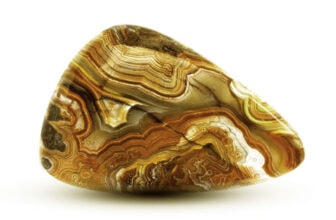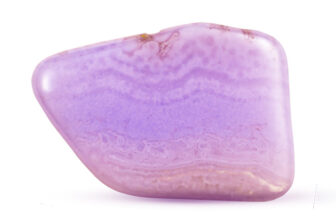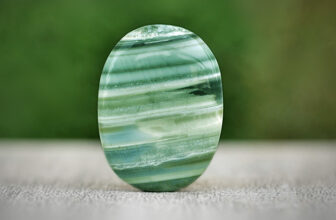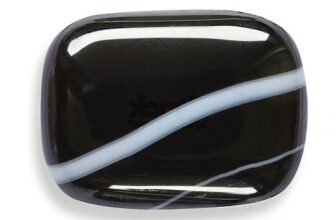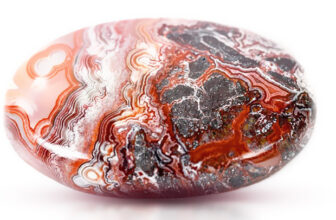Tumbled Stones: Nature’s Polished Treasures
Ever felt the weight of the world pressing down, seeking solace in something tangible? Imagine holding a smooth, cool stone in your palm, its surface whispering tales of transformation and resilience.
What Exactly Are Tumbled Stones?
Tumbled stones are small, polished pieces of rocks or minerals that have undergone a process to smooth and shine their surfaces. This transformation enhances their natural colors and patterns, making each stone a unique piece of art.
Commonly found in various sizes, these stones are cherished for their beauty and versatility.
The Art and Science Behind Tumbling
Tumbled stones are more than just polished rocks; they are the result of a meticulous process that combines both art and science.
This transformation involves two primary methods: rock tumbling and hand polishing.
1. Rock Tumbling Method
Rock tumbling is a mechanical process that simulates the natural weathering of rocks, producing smooth and polished stones over time.
This method is widely used due to its efficiency and ability to process multiple stones simultaneously.
Equipment
The primary tool for this method is a rock tumbler – a rotating barrel filled with stones, water, and abrasive grit.
As the barrel rotates, the stones collide with each other and the abrasive material, gradually smoothing their surfaces.
Stages
The tumbling process typically involves four stages, each using progressively finer grits to achieve the desired polish:
- Coarse Grinding: This initial stage uses coarse grit (60-90 mesh) to remove rough edges and shape the stones. Depending on the hardness of the stones, this stage can last from one to two weeks.
- Medium Grinding: Using medium grit (120-220 mesh), this stage further refines the shape and begins smoothing the surface. It typically lasts about one week.
- Fine Grinding (Pre-polishing): Fine grit (400-600 mesh) is used to eliminate any remaining scratches and prepare the stones for polishing. This stage also lasts approximately one week.
- Polishing: The final stage employs a polishing compound, such as cerium oxide or tin oxide, to achieve a glossy finish. This stage can take one to two weeks, depending on the desired luster.
Duration
The entire tumbling process can span from four to eight weeks, depending on the type of stones and the desired finish.
Patience is key, as rushing through the stages can result in subpar results.
2. Hand Polishing Method
Hand polishing is a more manual approach, often reserved for delicate or high-value stones that may not withstand the tumbling process.
This method allows for greater control over the final shape and finish of the stone.
Technique
Hand polishing involves using tools like cabbing machines equipped with multiple abrasive wheels.
The process begins with coarse grinding to shape the stone, followed by progressively finer grits to smooth and polish the surface.
Application
This method is ideal for creating cabochons – stones with a flat base and a domed top – commonly used in jewelry.
It is also suitable for stones with unique patterns or inclusions that require careful handling.
Outcome
Hand polishing produces a brighter and more controlled finish, highlighting the stone’s natural beauty and unique characteristics.
While more labor-intensive, the results can be exceptionally rewarding.
Characteristics That Captivate
Tumbled stones are far more intriguing than merely polished rocks; each stone embodies transformation, artistry, and an intricate relationship with nature.
Let’s dive deeply into the captivating traits that make these polished gems a cherished treasure.
Appearance
One of the most enchanting aspects of tumbled stones is their striking appearance.
Through meticulous processing, these stones evolve from raw, rough forms into pieces of polished perfection, showcasing nature’s artistry in an accessible form.
Shape:
The most immediately noticeable characteristic of a tumbled stone is its shape.
Typically, these stones exhibit gently rounded forms, polished by tumbling equipment which mimics natural erosive processes like waves on a beach or the constant flow of a river. This process creates unique shapes- each stone’s final form determined by its inherent hardness, original shape, and mineral composition.
In contrast, stones polished by hand often have more predictable and uniform shapes, particularly useful for crafting jewelry or for collectors seeking symmetry.
Surface:
The surface of a tumbled stone is a tangible representation of patience and persistence. The meticulous tumbling or polishing processes yield a surface that’s exceptionally smooth, glossy, and inviting to touch.
Size Variations
The versatility of tumbled stones extends significantly into their sizes, each category serving distinct purposes and preferences.
Small:
Small tumbled stones are highly popular due to their practical and versatile nature. Their petite size, typically ranging from about half an inch to an inch, makes them ideal for use in jewelry such as necklaces, earrings, bracelets, and pendants.
These stones can be conveniently carried in pockets or purses, offering comfort or metaphysical benefits throughout the day.
Medium:
Medium-sized tumbled stones are frequently favored in spiritual or holistic practices.
Usually ranging from about one inch to two inches, these stones perfectly fit into the palm of a hand, making them ideal for meditation, energy work, Reiki, and chakra balancing.
Their size makes them easy to handle during therapeutic sessions, allowing individuals to comfortably interact with their calming or energizing properties.
Large:
Large tumbled stones, typically measuring over two inches, serve as prominent decorative elements in homes, offices, or meditation spaces.
Their substantial size allows them to be centerpieces or conversation starters, offering both aesthetic beauty and subtle energy shifts within their environments.
Grading
Just like gemstones used in fine jewelry, tumbled stones are also graded, albeit using somewhat different criteria suited to their unique features and purposes.
Criteria:
Grading of tumbled stones involves evaluating several important qualities:
- Color: Stones with vibrant, rich, and consistent colors typically receive higher grades. Unusual color combinations or rare hues can significantly enhance their perceived value.
- Clarity: Transparency and freedom from cracks or fractures greatly influence a stone’s grade. Clearer stones, particularly in varieties like quartz or amethyst, are highly prized.
- Inclusions: While clarity is important, unique inclusions or markings can also positively impact grading by adding uniqueness and character to the stone. Inclusions like rutiles or dendrites can increase a stone’s desirability among collectors.
- Overall Finish: The smoothness, shine, and absence of surface blemishes or imperfections significantly affect grading. Stones achieving an impeccable, mirror-like polish will naturally be graded higher.
Grades:
Tumbled stones typically range from grade A to grade D, with each level reflecting these specific criteria:
- Grade A (High Quality): These stones exhibit exceptional color, clarity, and a flawless finish. They are premium stones used for high-quality jewelry, collections, and healing practices.
- Grade B (Good Quality): These stones maintain good clarity and vibrant colors, though minor imperfections may be present. They are versatile and suitable for most uses including jewelry and meditation.
- Grade C (Average Quality): Stones in this category might exhibit noticeable imperfections or less vibrant colors, yet they remain aesthetically pleasing and effective for general decorative purposes and basic metaphysical applications.
- Grade D (Lower Quality): While these stones might lack intense clarity or color vibrancy, they still possess natural charm and are commonly used in landscaping, larger décor, or bulk applications.
Interestingly, certain inclusions, rather than detracting from value, can enhance the uniqueness and metaphysical significance of a stone, thus making even lower-grade stones highly desirable in niche communities.

